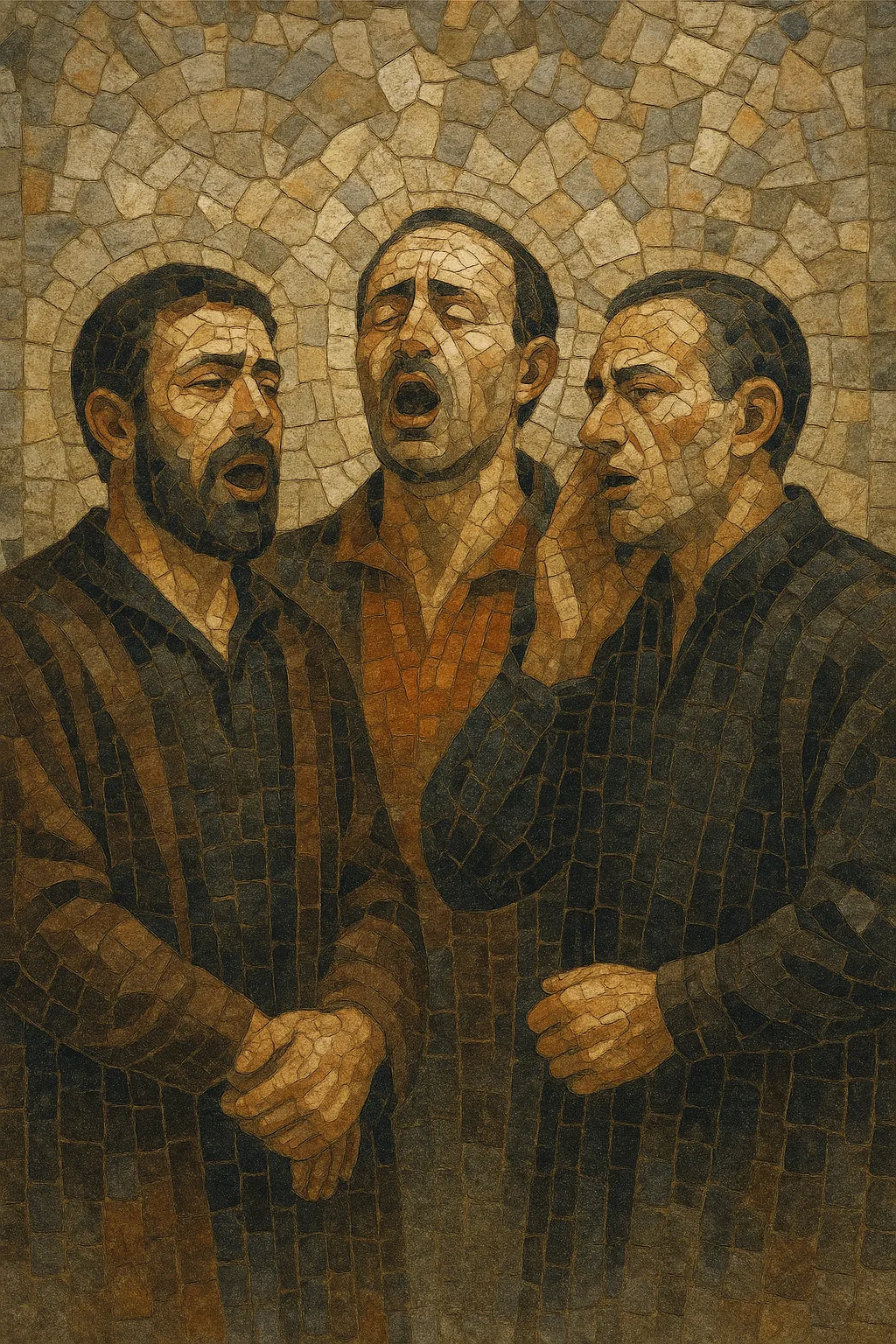Paghjella is a traditional Corsican a cappella polyphonic singing style characterized by three interlocking vocal parts—secondu (the central, leading voice), bassu (a low, droning foundation), and terzu (a soaring, ornamented upper line). The voices weave dense, beating harmonies rich in natural intervals and slight microtonal inflections, producing a striking, resonant sonority.
Historically performed by male singers in both sacred and secular contexts, paghjella can be heard in churches (during confraternal and liturgical occasions) as well as informal gatherings. Its melodies and texts, sung in the Corsican language, often convey devotion, memory, and communal identity. In 2009, “Cantu in paghjella” was inscribed by UNESCO on the List of Intangible Cultural Heritage in Need of Urgent Safeguarding, underscoring its cultural significance and the ongoing efforts to preserve it.
Paghjella likely crystallized between the late medieval and early modern periods, absorbing the sonic vocabulary of monastic and parish chant while developing a distinctly Corsican three-part polyphony. The practice took root in Corsican confraternities and village communities, where singers cultivated a shared repertoire for religious feasts, funerals, and local ceremonies, as well as for secular gatherings. Over time, the roles of secondu, bassu, and terzu became codified, shaping the signature texture: a central pitch-bearing line, a low drone or anchoring part, and an upper, often improvisatory voice.
Into the 19th and 20th centuries, paghjella continued to be transmitted orally, maintained by confraternities and village ensembles. Social change, migration, and shifts in liturgical practice gradually reduced everyday contexts for performance. Yet field recordings and early documentation by ethnographers helped preserve examples of the style, offering a reference point for later revivalists.
From the 1970s onward—during the Corsican cultural revival (riacquistu)—local ensembles and cultural actors renewed interest in traditional singing. Groups began researching repertoire, teaching younger singers, and presenting paghjella on stage without severing ties to its communal and devotional roots. This period also brought international exposure and collaborations, placing Corsican polyphony on the world-music map.
In 2009, UNESCO inscribed “Cantu in paghjella” on its List of Intangible Cultural Heritage in Need of Urgent Safeguarding. That recognition galvanized initiatives in documentation, pedagogy, and transmission within Corsica. Today, paghjella is taught in workshops, performed by confraternities and professional ensembles alike, and remains a living emblem of Corsican identity.


